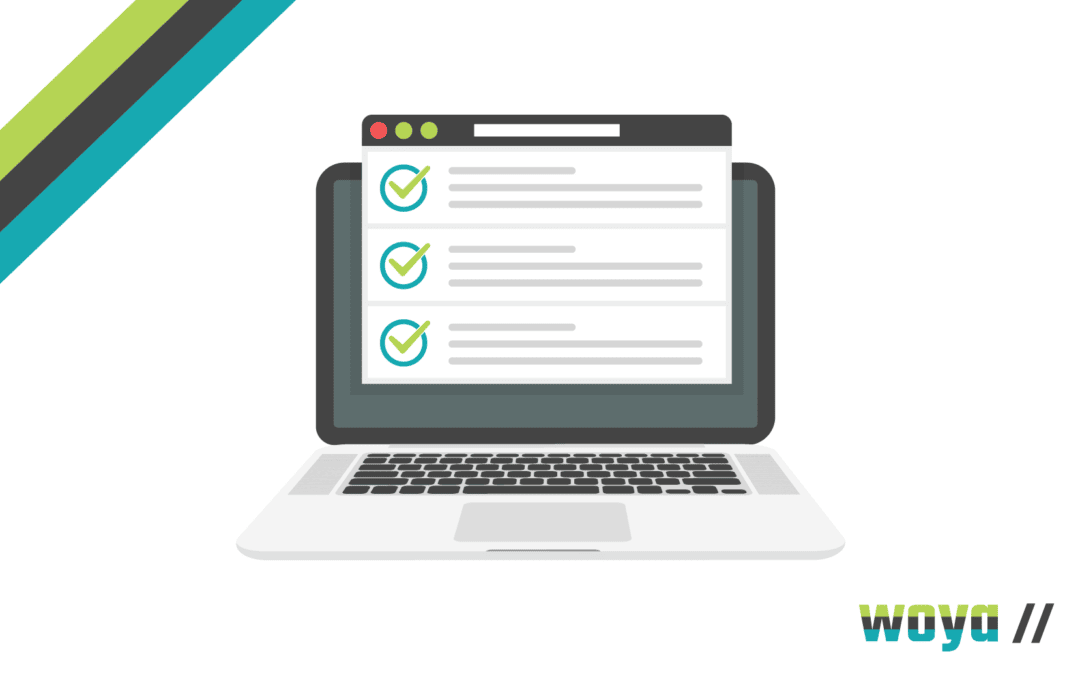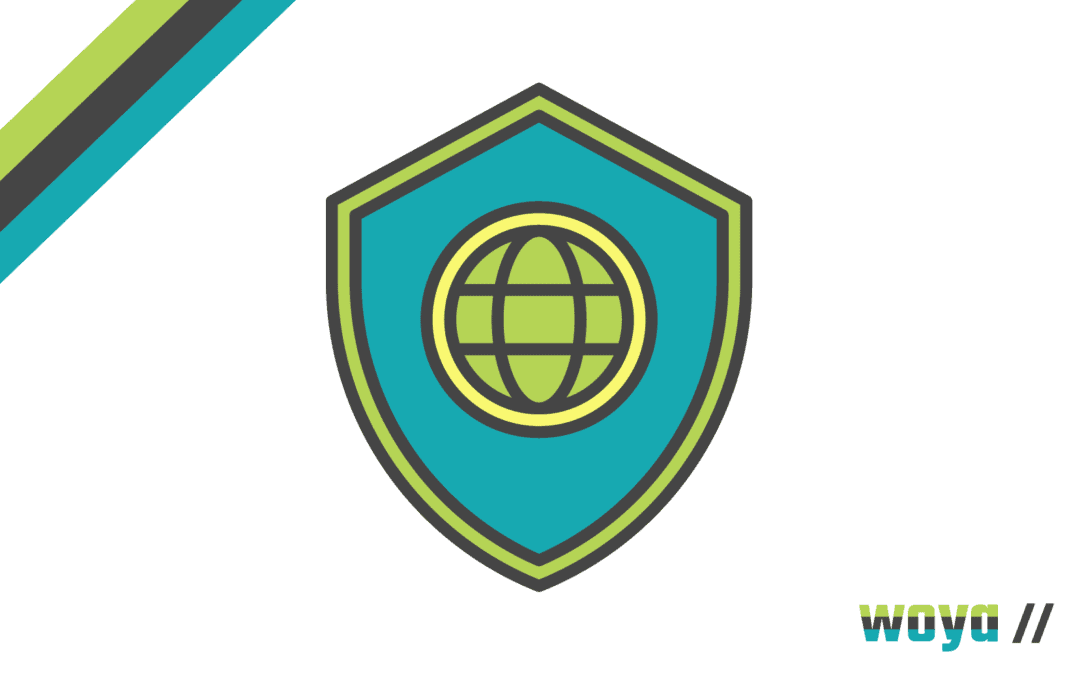
Website Redesign SEO Checklist
Reading Time: 10 minutesThere comes a time in the life of most websites where the organisation responsible for it chooses to overhaul its look, feel and function, whether this be for branding, business direction, user experience (UX) or simply aesthetic purposes.
It can be easy for those working on a website redesign project to get caught up in new functionality and fresh visuals, and as a result one of the most critical elements of a web presence is often forgotten: SEO.
Search Engine Optimisation (SEO) is the practice of making a website as easy to read by search engine algorithms as possible, in order to rank highly on SERPs (Search Engine Results Pages).
When a website is properly optimised, it benefits not just from competitive rankings in relevant search results, but also from enhanced UX and higher levels of satisfied, engaged users.
SEO is by no means a ‘one-and-done’ exercise, but instead an ongoing activity that can formulate part of a wider program of continuous improvement. If SEO is overlooked in a website redesign process, the presence of it in search engines will fall and the full cycle will need to be restarted all over again.
Cover all your SEO bases with our website redesign SEO checklist.
The Foundation: Understanding Why SEO Matters in The Website Redesign Process
The world’s thirst for knowledge has shifted and grown with the advent of the internet and increased accessibility to vast connectivity has seen search engines become the ‘go-to’ resource for most questions and queries.
To ‘Google’ is now a verb, with over 8.5 billion searches happening daily on that one search engine alone, and the Google Index holds up to 60 billion active web pages at any one time.
It is no surprise therefore, that SEO efforts now form a key component of a digital marketing strategy – as without it, web presence would simply get caught in the ether and underestimated, ignored, or missed entirely.
Optimising a website’s content, structure and UX to be easily navigated by both users and search engines’ automated bots alike is critical to the gain of organic web traffic. While there are indeed a number of traffic-generating options that businesses can pay for, organic traffic refers to traffic sourced without any payment being made, so it can be ensured that the reason for visiting the website over and above any others is genuine and intended.
This makes organic traffic extremely valuable – and SEO is the best way to obtain such traffic and attract visitors in this way.
With those visiting websites through organic means already holding genuine search intent behind their visit, these users are most likely to follow conversions, gather information for purchase decisions, make purchases and hold an overall positive perception of the site. This makes organic traffic a fantastic source of business growth and when managed properly, can increase sales.
If SEO is ignored or forgotten during a website redesign process, all these benefits are lost; and negative consequences can be felt as a result.
URL Structure & Mapping
URLs specify the location of a web page or other online resource and allow users to identify where on a website certain information resides. URLs are considered a minor ranking factor for search engines but give weight to the overall domain authority as well as offer up another opportunity for keyword usage.
Well written URLs can serve as anchor text and provide an easy navigation system for web crawlers to understand and index a website’s structure.
Where new pages are being written and included as part of a website redesign, it is important that URL structure is kept consistent and that all external and internal links are checked and tested to preserve link equity. If links are broken, a ‘404 Page Not Found’ error can occur, and users are likely to click off to another website.
If pages are to be replaced, webmasters can code in 301 redirects to allow a permanent redirection from one URL to another.
This maintains the search engine ranking of the existing URL but allows for users to access a newer page version. Search engine crawlers do recognise that the content has been replaced but do not impose ranking penalties.
Retaining Quality Content
Website redesign processes need not entirely replace a site’s content. There’s no need to fix what isn’t broken!
Top-performing content should be kept unchanged or minimally updated, as it has already proven its worth to users.
Retaining content that has historically been of success for a website allows for the SEO weight to be maintained and those who have accessed the content in the past to continue to as they have previously – or better yet, share onward with others.
Where content has been successful from an SEO and brand perspective historically but now contains outdated information, it can be updated without compromising the existing ranking.
A byline or paragraph at the top of the page, dated and with a summary of the updated information along with a link to a more up-to-date page is considered best practice.
Mobile-Friendliness & Responsive Design
Searches now occur from mobile devices more than they do desktop computers; likely due to the convenience of being able to access information in any place at any time. This means that traditional website builds are no longer enough to present content suitably for all visitors and so website redesigns should always follow a mobile responsive, if not mobile-first approach in its build.
While Google insists that no one on-page factor affects search rankings alone, mobile usability impacts on overall UX for most, which is considered vital to SEO. Additionally, if a website redesign doesn’t cater for mobile devices in its formatting and structure, those who do encounter it in search engine rankings simply won’t click through to the domain or will rapidly click away once they do.
Those managing a website redesign project are likely to have formal testing measures in place but there are a variety of tools that can be used to check the mobile compatibility of any domain.
This includes the manual testing of site resources across various devices but also the use of Google Search Console’s online Mobile Friendly Test by either URL or code to provide a ranking of its performance.
Site Speed & Performance Optimization
We live in a culture of instant access to information and as a result, society expects to be able to get what they want instantaneously online.
This means that where a decade ago web users would accept waiting a few seconds for pages to load, user behaviour now dictates that pages should load immediately, and they are rarely likely to wait should anything take any longer.
The loading speed of a webpage and the content on it is a Google Core Web Vital. Core Web Vitals are considered a significant search engine ranking factor. Referred to as the LCP (Largest Contentful Point), Google’s web crawlers analyse the time that the largest content on a page takes to load ready for user interaction – and as far as rankings go, the quicker the better.
Google’s free PageSpeed Insights tool allows webmasters to test and grade their websites to benchmark their performance and get an idea of how well they perform in the search engine’s algorithm as a result.
Optimisations can be made fairly easily in most cases through the use of image compression, utilising CDN practices or minimising code usage. Where issues remain, webmasters can consult with SEO specialists to identify issues and resolve them as they occur.
On-Page SEO Essentials
Aside from the usage of SEO keywords and relevant terms throughout written content, there are several on-page SEO essentials that are design-critical. It is important that webmasters need to remember the inclusion of these throughout the website redesign process.
The title tags and heading structures of written text need to be kept correct and consistent throughout for not just formatting purposes but also to demonstrate to web crawlers topics and theme importance.
Also, meta titles and descriptions should be included on all pages in order to demonstrate appropriate information in search engine results. Similarly, images used should be optimised and always include ALT tags describing their contents for enhanced accessibility.
Internal linking strategies should be put to mind just as external are, providing easy navigation for users. This increases the amount of time users are likely to spend on a site and allows for plenty of direction made to pages aimed at driving conversions.
XML Sitemaps & Robots.txt
Web crawlers ‘crawling’ through websites are key to the relevant algorithms understanding what a website is about, who it’s for, and how to rank it amongst other content for searches.
When undergoing website redesign, webmasters and marketers must ensure that these bots are able to navigate the site swiftly and accurately so that the calculations made in its ranking are correct.
XML Sitemaps are files listing out the essential pages of a website; in essence mapping them out for web crawlers to follow. Sitemaps can be submitted to Google (and other search engines) to provide directions for its indexing. This ensures that even tricky-to-reach pages, such as those without any internal links pointing to them, are recognised and indexed.
Existing website redesigns should also include a refreshed robots.txt file. These files control the behaviour of web crawlers, so that only webpages that the webmaster wants indexed are – and others are left un-indexed.
Secure & Accessible Website: Importance of HTTPS
Google doesn’t want to direct its users to unsafe or insecure websites as this in turn would give a negative perception of them and their services. Google prioritises ranking secure websites above those without adequate safety precautions in place as a result.
The use of HTTPS is a ranking factor as part of overall UX. HTTPS encrypts the connection between browser and site to safeguard the interception of any data between the two.
Where websites don’t use such safety measures, they are unfavourably ranked by Google and in some cases, excluded from ranking altogether. This makes it a must-have for website redesign projects!
Another security item those working on a website redesign must look to include is an SSL (Secure Sockets Layer) Certificate.
This is a digital certificate that authenticates a website’s identity, and the owner of the website and associated subdomains, as well as proving encryption of SS/TLS. SSL Certificates must be obtained from a CA (Certificate Authority) and once verified and granted, should be installed and activated on the website’s origin server. As a further security tool, this too boosts SEO through the demonstration of security commitment from the domain.
Duplicate Content Issues
Where new content is being produced as part of a website redesign, it should be checked that duplicate content doesn’t appear across the site too. While basic admin areas such as footers and calls to action may be duplicated, there is rarely value in large portions of duplicate text.
In some cases, duplicate content exists within a website for genuine reasons. Content of this type can be differentiated through the use of canonical tags coded in HTML to flag the preferred version of a page and identify between duplicate, near duplicate and similar pages. In website redesign projects, these tags can flag distinctions to web crawlers as they revisit the site.
There are various software tools available online for the detection of duplicate content, both within one website and across other sites (whether intended or not). Sites such as Siteliner and Copyscape can highlight incidences of repeat copy across the internet, which can be of great use to webmasters and marketers working on digital content.
Structured Data & Schema Markup
Schema markup is microdata added to a webpage in order to create a ‘rich snippet’ of extra information to the page’s results in search engines. Schema.org, the central resource for schema markup, was created as a collaboration between Google, Yahoo, Bing and Yandex in 2011 and since has guided hundreds of thousands of webmasters in enhancing their results in SERPs.
When done correctly, schema markup gives further information to search engine’s web crawlers on the context of a webpage in order to better inform their results presentation.
This impacts positively on positioning pages in the right order, at the right time, on the right queries. Rich snippets, when included on search results, contain information such as ratings, prices and images – and give more data to users on first glance; improving the chances of a clickthrough from a SERP.
Schema.org can be considered the best central resource for information on structured data and schema markup. In addition, there are tools to test the structured data of a website which webmasters and marketers can use to their benefit such as the Google Structured Data Testing Tool. This allows for the real time testing of coding
Social Media & SEO
A presence on audience-relevant social media channels is expected by most consumers but does not directly impact SEO. However, as a marketing channel focused on reputation building, it holds indirect affect on rankings as a brand builds its overall authority.
Social media sharing options on all appropriate content provides the facility for users to spread content they find useful or interesting onward to others, amplifying reach and furthering the possibility for brand exposure.
This is an often forgotten but is a key win in website redesign projects – as adding these tools only takes a few minutes but can have a vast impact.
It’s important that brands keep consistency across all platforms. While approach and exact content may differ depending on what works for each channel, users must be able to immediately recognise who a brand is and what they do based on their messaging – no matter where it is they see it.
Monitoring & Reporting: Post-launch Considerations
Once a website redesign has gone live, there are several checks webmasters and marketers should carry out to ensure they’re best possibly placed SEO-wise.
Noindex tags are on-page codes that instruct search engines not to index a page. Often inserted into webpages as they’re being tested, they block indexing by search engines entirely and so must be removed before launch. If the site has gone live without this check being carried out, it must be done as soon as possible!
Setting up Google Search Console and Google Analytics to interact with a website can be done by inserting a small piece of code. This verifies live indexing and will gather statistics on user behaviour through the site to report on how its being used and supply information on what’s working and what isn’t – allowing for a cycle of continuous improvement in web performance to begin.
Monitoring tools will also be able to flag where crawl errors occur, links are broken, or other issues present so that they may be rectified swiftly.
Keyword presence and performance and traffic levels should also be monitored on an ongoing basis. Where performance isn’t as expected, improvements can be made, and where wins are experienced, further work can be put into enhancing these areas.
Website Redesign SEO Checklist Wrap-Up
Website redesign projects are all too often chalked up as a rebranding or aesthetic exercise, with the likes of SEO forgotten as it’s considered ‘taken care of’ through the usage of keywords in copy.
This can have devastating consequences for the ranking of a website and as a result, for the competitiveness of the organisation.
A well-planned SEO strategy must include content considerations alongside on-page and off-page factors and the implementation of appropriate coding. With a well-rounded approach to SEO is taken after a website redesign, the website may avoid negative ranking impact altogether – and could even benefit positively without interruption.
No matter how far-reaching a website redesign is, it should be embraced and considered a good opportunity for new learning.
Entering a cycle of continuous improvement provides the chance for businesses to get better and better, growing their web presence and shifting their digital marketing and SEO strategy to fit algorithm changes and user behaviour demands, meeting and exceeding needs and expectations.
With the help of a specialist SEO agency like Woya Digital, website redesigns and the onward management of domains can be hugely successful: elevating brand perception, reputation and sales. Don’t underestimate the power of SEO… instead run with it and open up a world of digital possibilities!




